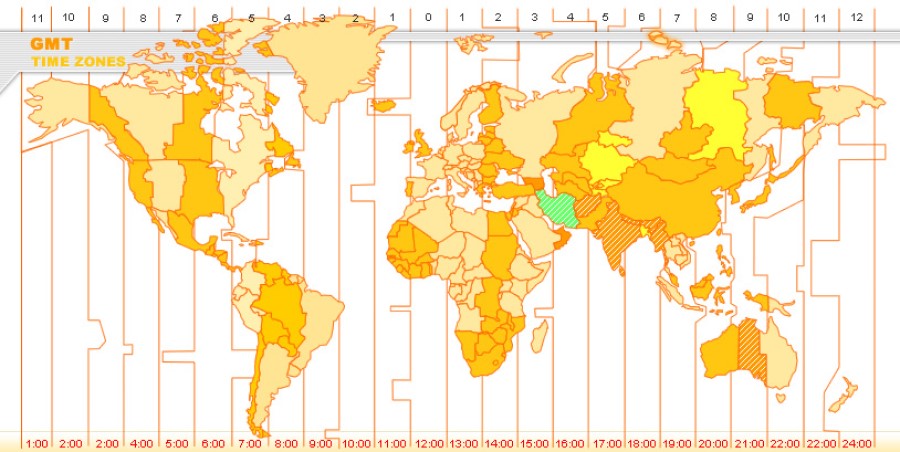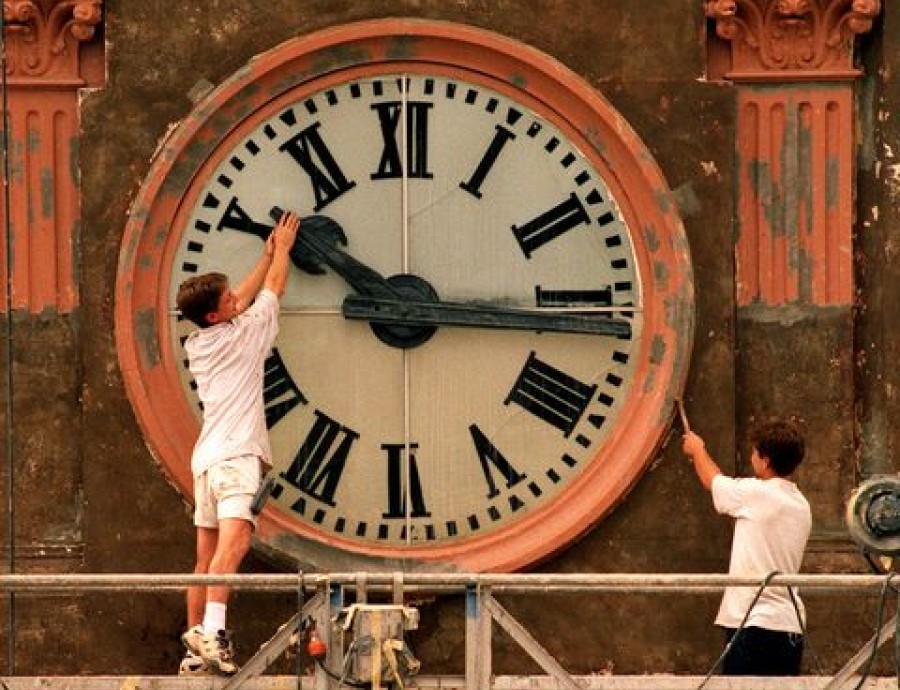One of the drawbacks of traveling to far away places is that you have to deal with different time zones. If there’s a significant difference between the time by your clock and the local time, you’re in for a couple of days during which you have to put up with the dreaded jetlag.
How far ahead is Iran in time?

If you’re going to Iran, you need to know that the local time is UTC/GMT +3:30 hours. Let’s see what this means. Iran standard time (which is from March 22 to Sep 22) uses a UTC offset UTC+03:30 and Iran daylight time (which is from Sep 22 to Mar 22) uses a UTC offset UTC+04:30.
If you travel to Iran coming from London, which uses the standard GMT +0:00 hours and your watch says it is 2 pm, when you land in Tehran you’ll have to put it forward by three and a half hours, to 5.30 pm. By the time you reach your hotel it’s almost dinner time, or so you think.
Things are more complicated if you come from the United States, and your clock, that on your phone as well as your biological clock, says it’s 13:30, but in Iran it’s already 9 pm. Hopefully they gave you lunch on the plane, as it’s dinner time in Iran. Hold on, that’s not the whole story.

In Iran they also have Daylight Savings Time (DST), but it works differently. The clocks there go forwards by one hour on March 22 and revert to standard time on September 22. If you travel to Iran during this time of the year, this means that the local hour will be GMT+ 4:30 hours.
So simply when you travel to Iran from March 22 to September 22 (Iran spring and summer) you need to adjust your clock based on UTC/GMT + 3:30 hours and when you travel to Iran from September 22 to March 22 (Iran autumn and winter) you need to adjust your clock based on UTC/GMT + 4:30 hours.
Read also: Best Time to Visit Iran: A Complete Guide
How to adapt to local time?

Most smartphones automatically update the phone timing based on your current location subject to internet access. Meaning after your landing at one of Iran airports and having access to the internet, your phone will automatically adjust the phone clock based on Iran’s local time. In case the time has not been adjusted automatically, you need to go to setting and manually change your phone (likewise your hand watch) based on UTC +3:30 or UTC +4:30 (depends on which month you travel to Iran).
Iranian daily routine time
For the tourist landing in Iran, one of their priorities is to get something to eat as soon as they reach their hotel. If you arrive around 8 or 9 pm you might be worried that it’s too late for dinner and will have to grab a sandwich or whatever you can get at that hour.

The good news is that in Iran, having dinner at 10 or 10:30 pm is quite acceptable, and you’ll find plenty of open restaurants at that hour.
Lunch is usually served around midday or a bit later. You won’t have to go hungry until 8 or 9 when most people start thinking about dinner, as you can have an asrooneh, around 4 or 5 pm. That’s similar to the 5 o’clock tea the British have.
When you check in at your hotel and want to inquire about meal times, know that Sobhane is breakfast, Nahar is lunch, while Sham means dinner.
As far as shops are concerned, you need to know that they are usually open between 9 am and 8 pm from Saturday to Thursday. They might have shorter hours on Thursday and Friday, which represent the Iranian weekend.
Also, many venues might be closed between 1 pm and 3:30 pm for a siesta, especially during summer when it gets quite hot in the southern part of the country. In the hottest regions along the Persian Gulf coast the activity might pause until 5 pm in summer, but they will be open until 8 or 9 pm.
Museums and major tourist attractions are usually open to visitors from 9 am to 6 pm during summer, or until 4 or 5 pm in winter.
Read also: Travel to Iran: Tips for First Travelers

